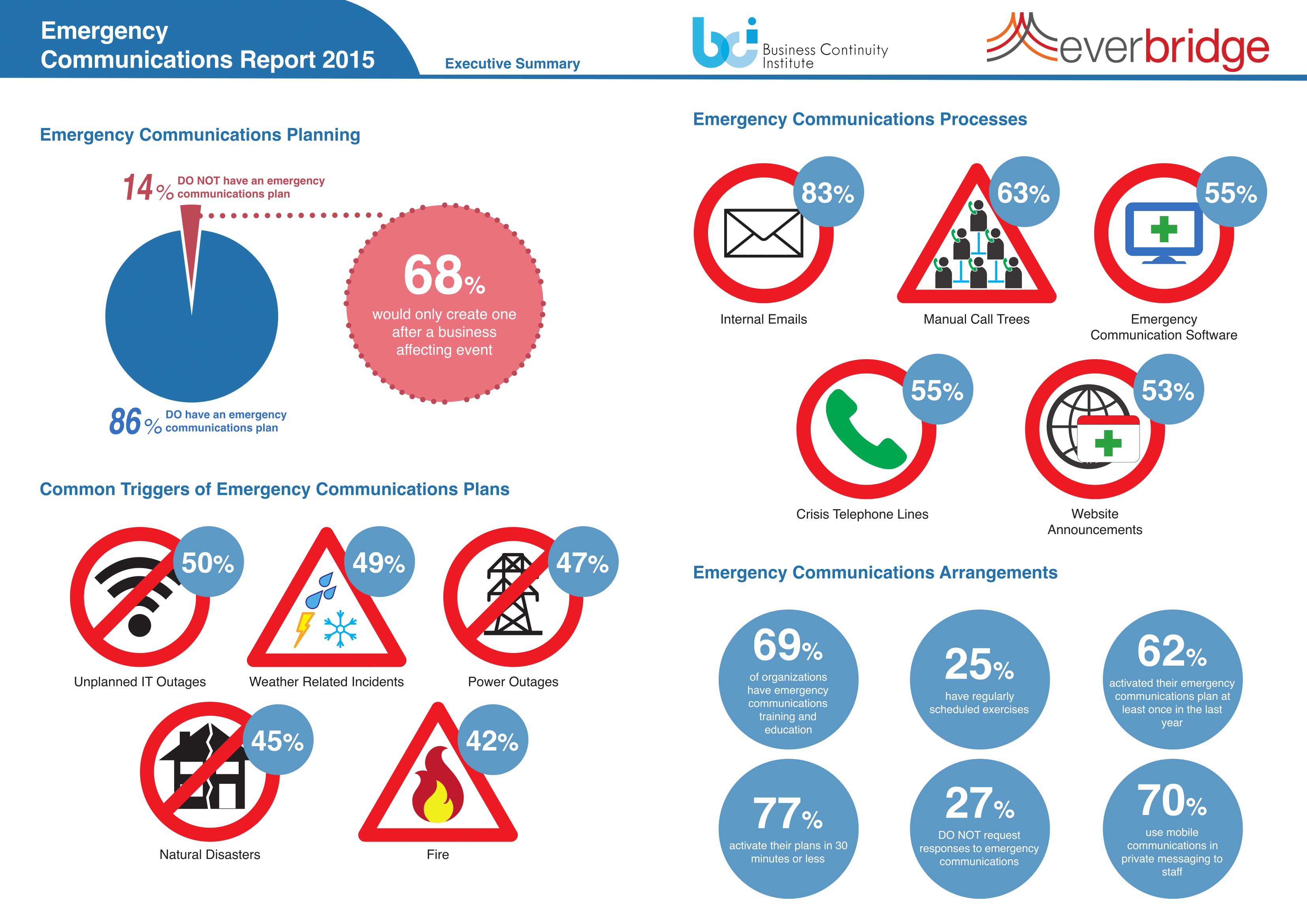Communicating in a crisis
Reliable emergency communications saves lives and demonstrates how organizations approach their duty of care to their stakeholders
Organizations are beginning to understand the need for having an emergency communications plan in order to improve stakeholder communications during a crisis
Caversham, UK – 1st December 2015: A newly published report from the Business Continuity Institute (BCI) has demonstrated the need for organizations to invest in an emergency communications plan by revealing that nearly two thirds of respondents (62%) to a global survey had activated their plan during the previous year. The urgency of emergency communications is further highlighted by over three quarters of those activations taking place within 30 minutes of an incident commencing.
The Emergency Communications Report, supported by Everbridge, noted that over a quarter of emergency communications plans do not request a response when activated. This is a worrying statistic as, if an incident is important enough to justify the plan being activated, then surely it warrants knowing that the message has been received by the intended recipients.
Further findings from the report include:
- 14% of respondents reported that they do not have an emergency communications plan.
- Of these which do not have an emergency communications plan, over two-thirds (68%) state they would only create one after a business affecting event.
- Email is the primary method of communication used during an emergency with 83% claiming to use this, while 63% use manual call trees, 55% use emergency communication software, 55% use crisis telephone lines and 53% use website announcements
- Over two-thirds of respondents noted that their organization has emergency communications training and education with regularly scheduled events.
- Nearly three quarters of respondents (72%) stated that their plan is exercised at least once per year, with a further 16% stating it is done at last twice per year
- Common triggers for activating the emergency communications plan include unplanned IT outages (50%), weather related incidents (49%), power outages (47%), natural disasters (45%) and fire (42%)
- Over two-thirds of respondents (70%) use mobile communications in private messaging to staff.
Patrick Alcantara, Research Associate at the BCI and author of the report, commented: “Reliable emergency communications saves lives and demonstrates how organizations approach their duty of care to their employees, customers and stakeholders. The survey results affirm that many organizations take this duty seriously and offer opportunities for further improvement. We thank Everbridge for supporting this study and sharing our goal of producing top-quality research that impacts practice."
Imad Mouline, Chief Technology Officer at Everbridge, commented: “The findings highlight that the unpredictability of global threats continue to necessitate a comprehensive enterprise critical communications strategy. While it's refreshing to see that organizations are more actively developing plans, and using mobile as part of their strategy, there is still work to be done to ensure that communications are securely and reliably reaching employees and customers."
The report concludes that top management buy-in and integration among different functional roles contribute to the successful embedding of emergency communications capability. Furthermore, organizations must focus on encouraging responses to emergency communications and this begins by defining acceptable response rates. This should be made easier as mobile communications are increasingly used by organizations as part of their emergency communications arrangements and technology has advanced so much so that this is a basic capability. Key to getting buy-in is education and training programmes which must be implemented as part of an overall holistic approach to continuity and resilience.
Press release distributed by Pressat on behalf of The Business Continuity Institute, on Tuesday 1 December, 2015. For more information subscribe and follow https://pressat.co.uk/
Emergency Communications Business Continuity Business & Finance Computing & Telecoms Media & Marketing
You just read:
Communicating in a crisis
News from this source:



